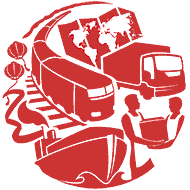Top 5 home appliances most needed by low-income families
Families living in poverty often lack necessities and access to essential resources needed to navigate day-to-day life. More than ever before, those from low-income families in our community and beyond face unprecedented challenges during these uncertain times. Fortunately, you can help during these unprecedented times by providing them with essential items that all adults, children, and elderly people need.
Most people in Hong Kong live in small apartments due to the sky-high rents and high population density. For low-income families, the issue of tiny, shared homes is magnified. In a survey of 204 families conducted by a local resident’s association, the average living space per person in a low-income family is around 50 sq ft (4.6 sq metres), the equivalent of just half a parking space [1]. With many low-income families struggling to make ends meet, lacking even the most basic living essentials can take a toll on one’s physical and mental well-being.
GoodCity is a service operated by Crossroads Foundation, a charity that collect gently used clothes, furniture, household appliances and much more that people living in Hong Kong no longer want and redistributes them to people in need – locally and internationally. Read on to find out the top 5 home appliances that will make the most difference to a low-income household.
Fans
Often, people living in poverty cannot afford to run air conditioners during hotter months due to the high electricity cost. Fans are especially needed during the summer months to help those in need avoid debilitating discomfort and the risks associated with heat-stroke. The cost of running an air conditioner with a 2.05 kW cooling capacity adds up to around $7.13 for 8 hours in summer, whereas keeping a fan on is closer to $1.52 for 8 hours.
Rice cookers
Considered a basic essential of every Hong Konger’s kitchen, rice cookers can efficiently make simple dishes beyond just rice. With costs such as rent, electricity and water fees increasing drastically, plus tuition-related fees for children, households living on low income and limited allowances have no choice but to adjust their spending on food expenses. Having a rice cooker can differentiate between having regular warm meals or relying on canned food to survive. A filling and nutritious meal with family and loved ones is the norm for many Hong Kongers, but for those struggling to make ends meet, the lack of healthy food can seriously affect physical and mental well-being.
Electric kettles
Like a rice cooker, an electric kettle is an essential in most Hong Kong kitchens. Since electric kettles are much more energy-efficient than stovetops or a microwave, you end up saving on your electricity bill. Electric kettles are easy to store away and don’t take up much space like induction cookers or microwaves.
Laptops
In a society where technology such as computers and smartphones are constantly pushing rapid technological innovations, many people only use their device for a couple of years before moving on to a newer model. However, while older models of laptops are perceived as less efficient, they can make a big difference to the lives of disadvantaged members of our community. Donating older, but still useable devices such as laptops can help children from lower-income families keep up with the digital landscape and help them stay on track academically and professionally.
Mobile phones
Since the start of the pandemic, most of the information regarding COVID-19 is circulated online. By donating a useable smartphone to those who are in need it can help them stay connected with the latest news and government regulations regarding the pandemic and more.
Where can I donate my electrical appliances?
GoodCity is operated by Crossroads Foundation, an established charity that has facilitated the donation of goods and helping those in need since 1995. Funded by the Hong Kong Jockey Club Charities Trust since 2018, GoodCity has ensured that donated goods from all over Hong Kong have helped nearly 300 non-profit organisations, benefiting more than 150,000 people.
Once you’ve submitted pictures of the items you wish to donate, GoodCity’s team of experienced volunteers will review your items based on the status, demand, and quantity. We will then notify you if your goods can be accepted. GoodCity also provides a variety of logistics options to transport your donated goods. You can book a commercial van immediately from within our app or book a drop-off time at our headquarters in Tuen Muen if you have your own transport.
